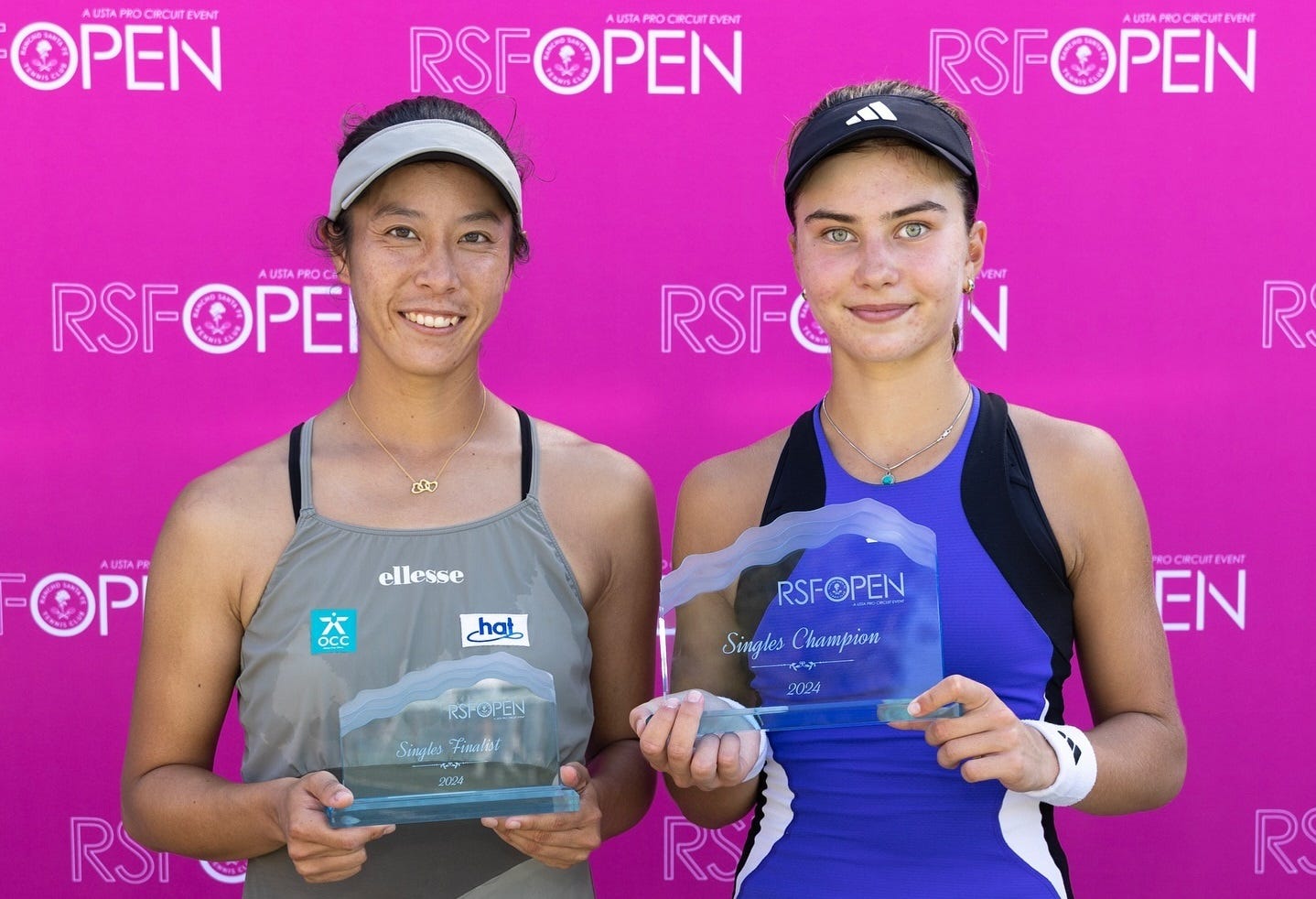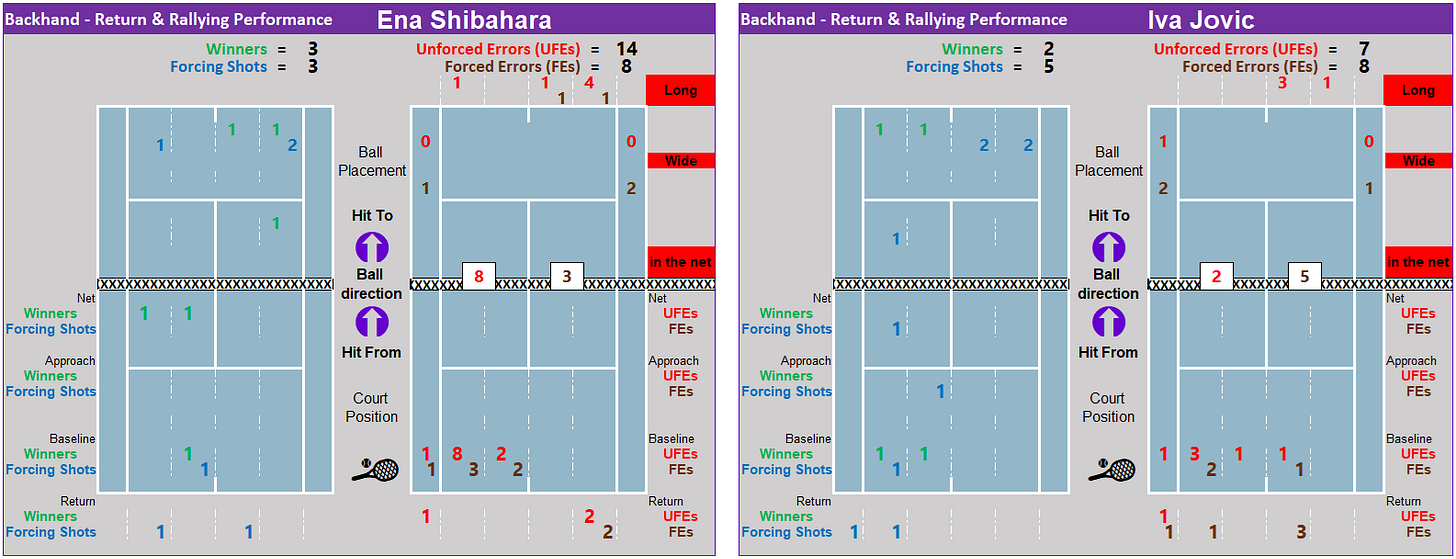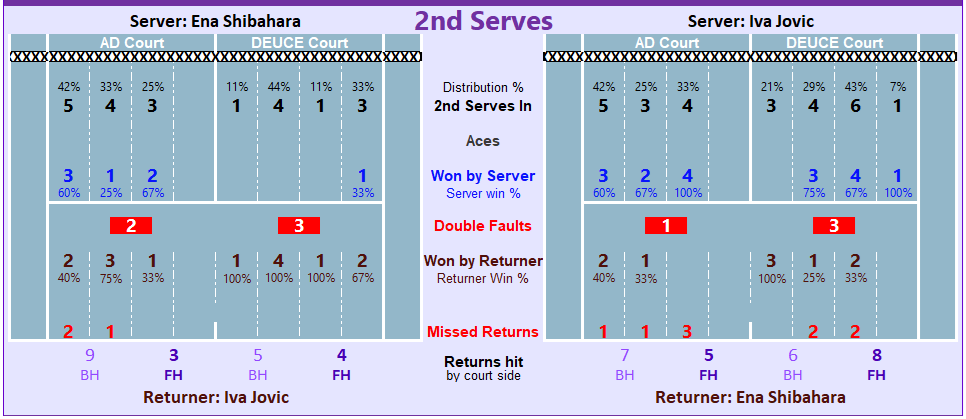Ena Shibahara vs Iva Jovic: Rancho Santa Fe Final Analysis (ITF W75)
California winning for Jovic as the 16-year-old claimed back-to-back titles in her home state
The ITF Tour W75 Rancho Santa Fe Open final was contested by two players coming off breakthrough performances at this year’s US Open.

In New York, 16-year-old Iva Jovic (WTA #290) captured a quality first career Tour-level main draw win when she defeated Magda Linette (WTA #40 at the time) in the first round. Despite losing to Ekaterina Alexandrova (WTA #30) in her next match, Jovic continued to impress as she pushed the 29th-seed to a tight three-setter and showed great poise and maturity in saving 6 match points before finally falling on the 7th for a 5-7 third set score.
Jovic’s return to ITF Tour action was the best possible as she erupted for a 10-match win streak and titles in consecutive weeks. Her triumphant run began at W35 Berkeley, where the teenager saved a match point in the second round, and proceeded at W75 Rancho Santa Fe, where the trophy arrived via a 6-3, 6-3 win over 3rd-seed Ena Shibahara (WTA #154). This last result secured Jovic’s first title above W35 level and avenged her 3-set loss to Shibahara in the championship match at W35 Spring, seven months ago.
Jovic, a finalist in her debut pro tournament as a 14-year-old back in 2022, now holds 3 ITF Tour titles in 6 finals played.
One the more intriguing under-the-radar stories of the season has been Shibahara’s attempt at shifting from an elite doubles to a successful singles player. Ending 2023 ranked #14 in doubles (career-high #4 in 2022) and #543 in singles, Shibahara put her doubles career on hold to grind her way up the singles ladder.
In March, the Japanese conquered her first career singles title with the above mentioned win over Jovic at W35 Spring. Four months later, Shibahara won her first WTA Tour main draw match in Prague, after getting in as a lucky loser. The ranking points earned from that 3-hour marathon helped lift Shibahara’s ranking just enough to make her the last direct acceptance for the US Open qualifying. She came through qualies, then fired 57 winners - highest total of round 1 - to defeat Daria Saville in a deciding set tie-break, thus earning her first ever main draw win at a Major and only her second Tour-level victory.
With 1 title in 3 finals and approaching the 50-win mark on the season - current record stands at 47-18 - Shibahara is already up to #143. Without points to defend until the end of the year, she may well enter the Top-100 in the coming weeks.
The RSF Open final started with Shibahara jumping to a 2-0 lead. Jovic saved 3 break points in the 4th game and held for 2-2, then won 12 of the last 15 points while breaking Shibahara 4 straight times to take the opening set.
Score progress in the second set was a copy of the first. Shibahara built a 2-0 lead, Jovic won the next 3 games and Shibahara tied at 3-3. Then Jovic finished with yet another 3-game run, closing the match with a backhand winner.
Return Errors
A decisive difference in the final was set by 2nd serve return errors.
Both players missed a similar number of 1st serve returns (7 for Shibahara, 6 for Jovic) but Shibahara accumulated 9 return errors against 2nd serves while Jovic had just 3.
Shibahara: 16 return errors
7 vs 1st serves
9 vs 2nd serves
Jovic: 9 return errors
6 vs 1st serves
3 vs 2nd serves
2nd serve points won
With Shibahara struggling to find the court on 2nd serve returns, Jovic ended up winning 57% of 2nd serve points. This more than doubled Shibahara’s 27% win-rate and was particularly crucial given that both players made a relatively low number of 1st serves and enjoyed the same success (55%) when connecting them.
“+1s” performances
Shibahara’s early-rally problems weren’t restricted to return errors. The Japanese accumulated 18 errors in “serve+1” and “return+1” shots combined, without striking one winner.
On the other side of the net, Jovic performed 11 points better in “+1s”, finishing with 2 winners and 9 errors (so, only half of Shibahara’s error total).
“+1s” performances
Shibahara: 0 winners / 18 errors = -18
Jovic: 2 winners / 9 errors = -7
Short rallies
The combination of return and “+1s” performances resulted in a huge 19-point advantage for Jovic in short rallies. The teenager won 45 points decided within the first 4 shots while Shibahara won 26 points.
Short rallies provided all of the winning margin.
Break points
To end, Jovic’s clinical conversion of break points must be mentioned.
The promising American was a perfect 4-for-4 to secure 4 breaks in a row in set 1 and ended the match taking 6 of 7 break points, for an 86% conversion-rate.
By contrast, Shibahara finished 3-for-9 (33%).
Ena Shibahara (WTA #154, seed 3) vs Iva Jovic (WTA #290)
2024 Rancho Santa Fe Final - Match Data
Set by Set Stats
Strategy
Serve and Return
Winners and Errors (returns and rally shots)
Strokes Breakdown

Direction of winning shots and unforced errors (only groundstrokes)

1st Serves
2nd Serves
Return & rallying performance



Rally Length
Points won breakdown
This final section gives a last, broader look at the match by presenting how each player won points. Points are listed according to their frequency (highest to lowest) and are named in relation to the last touch on the ball. For simplicity, groundstrokes hit from the 5th shot onwards are grouped together.
Breakdown by side (FHs or BHs)

Breakdown by error type (UFEs or FEs)

To find out more about the stats published here, please visit the following post.
Even though they follow the same criteria used on all major tennis events, they are not official WTA or ITF stats. They are collected through our own rigorous video analysis.
Thanks for reading!
— Tennis Inside Numbers












